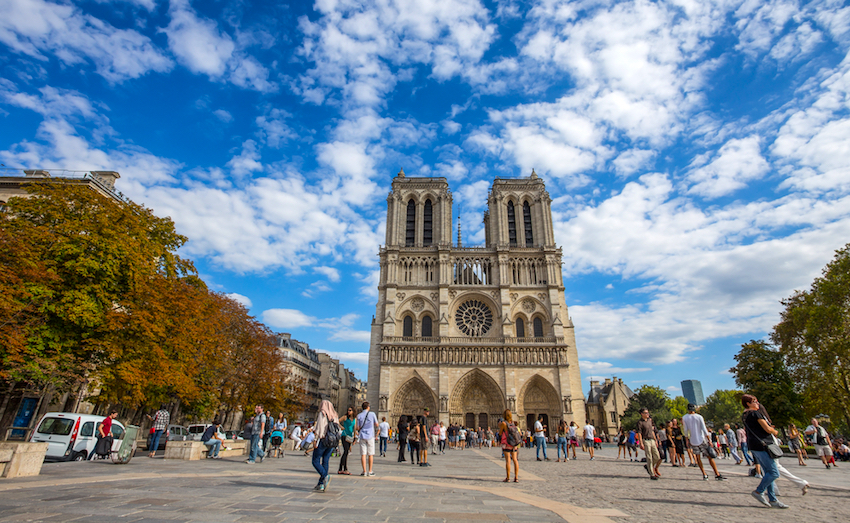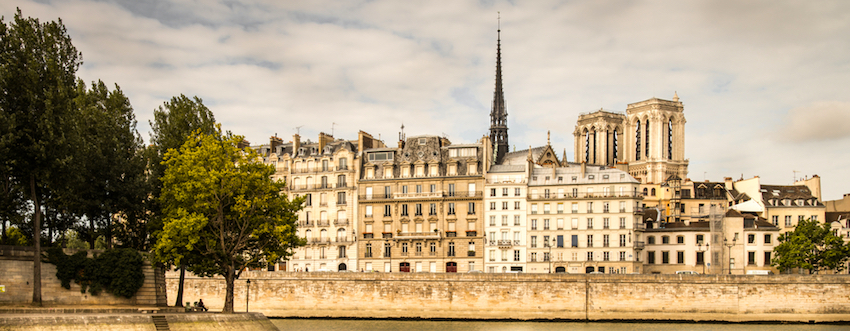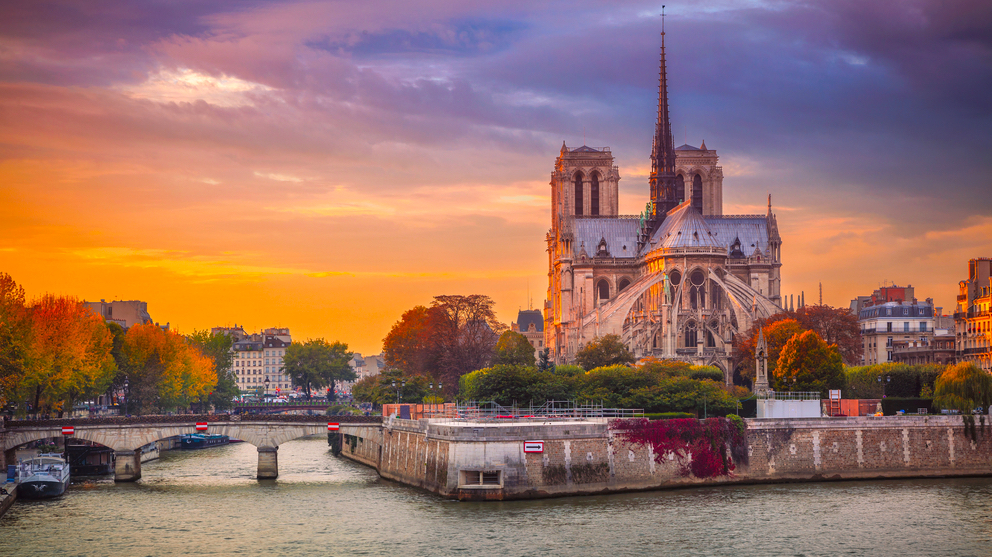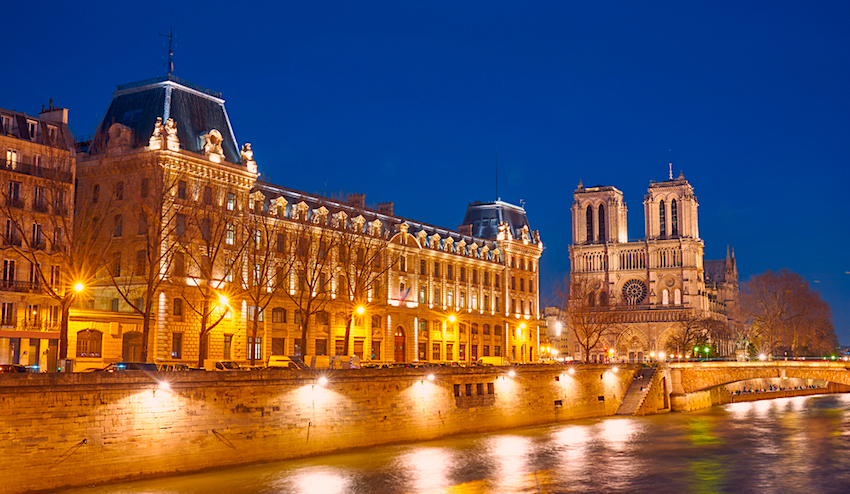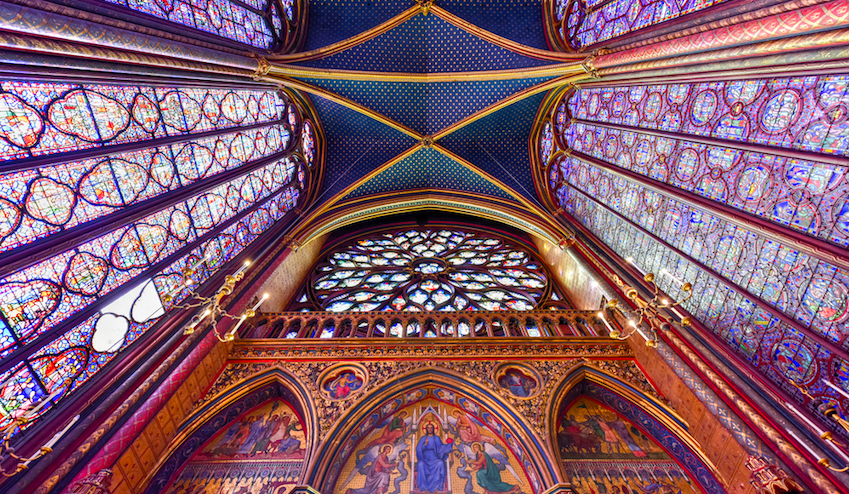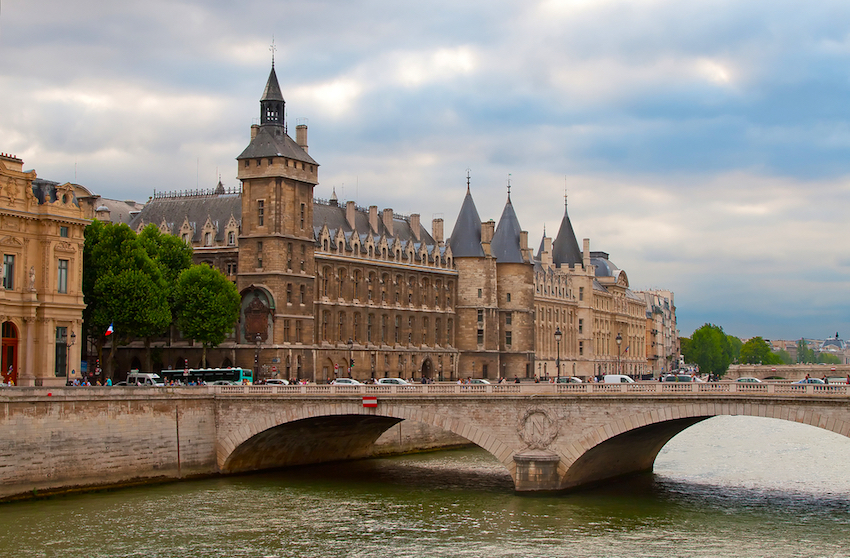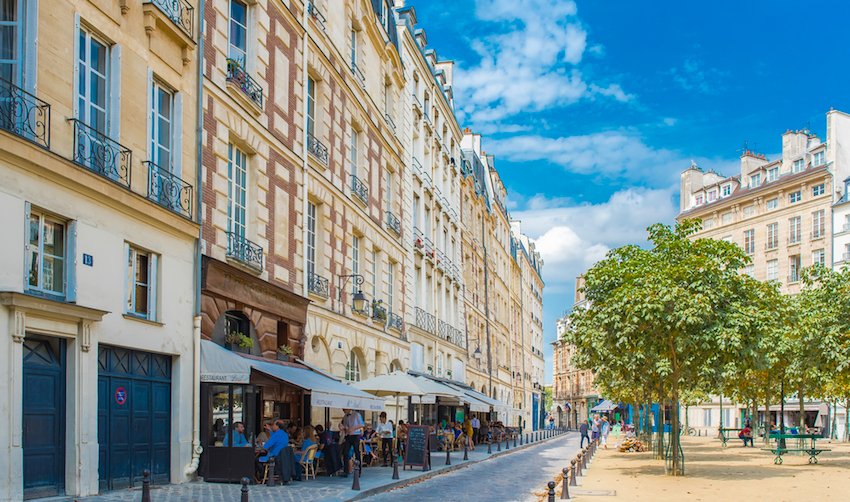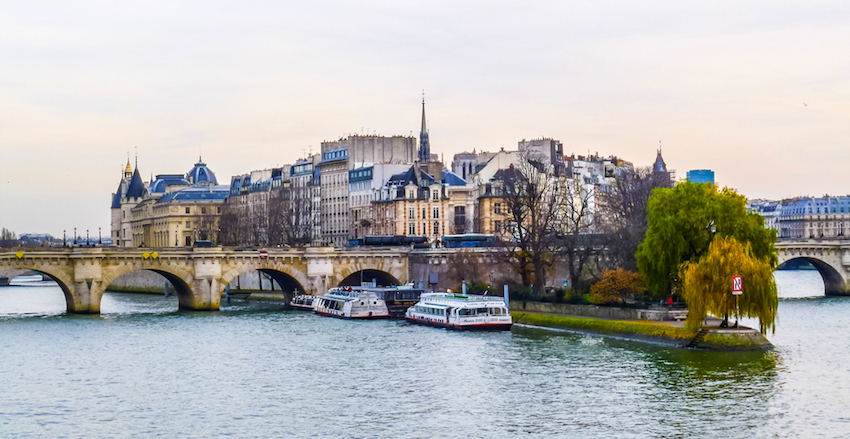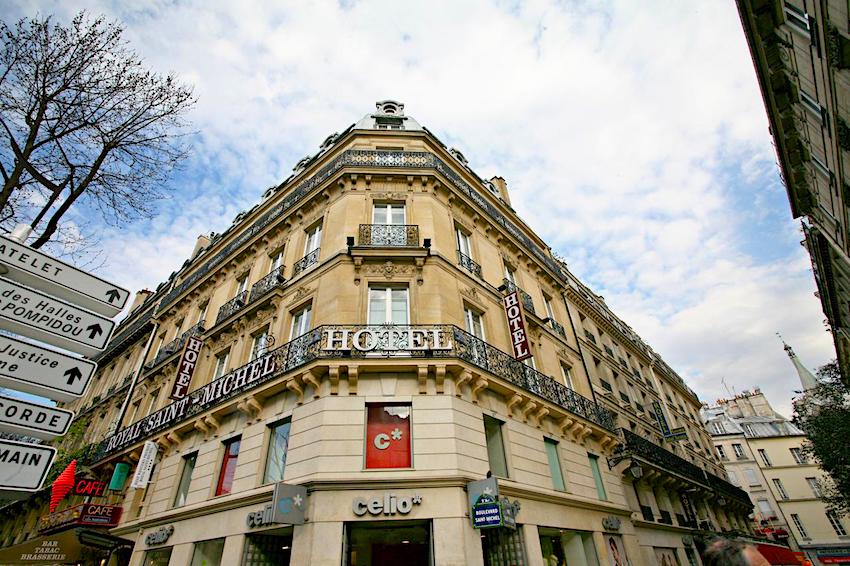Ile de la Cité
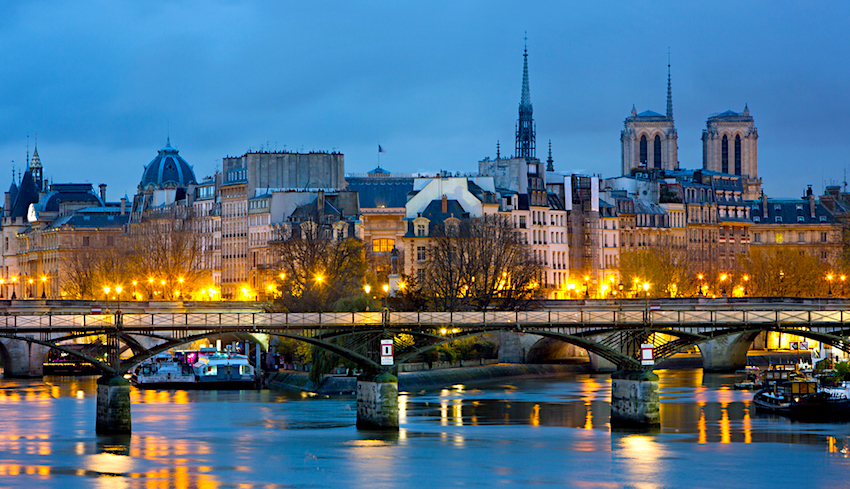
|
Few travelers and tourists visiting Paris, France, realize that the famous cathedral of Notre-Dame is actually situated on an island. The Ile de la Cité is usually referred to as the epicenter of Paris, as well as the original site of the Parisi tribes of the Sequana river, now known as the Seine. This was possibly the earliest settlement in Paris, then known as Lutetia, a muddy town on the banks of a swampy river that grew to become one of the most beautiful places in the world. |
|
The official "navel" can be found on a small bronze plaque in the square in front of the cathedral. This is just a few steps from where the early Romans set up shop in the 50's (A.D that is) This is technically the very center of France. Don't expect to have a revelation or see a halo just because you touch this spot with your shoe, although from the number of tourists taking frantic photographs of this hallowed point, I may be missing something. The focal point of the island is of course the Notre-Dame Cathedral. (Church of Our lady) dedicated to the mother of God. |
|
While most of historic Paris speaks for the glory of rationalism, calm order, broad boulevards and civilized gardens,
the most interesting neighborhoods are the result of less controlled situations. Although the Ile de la Cité
is organized, extremely well cared for, and considered the prime Parisian real estate, it is still at the mercy
of geology. The river has shaped and defined the island's character as much as the famous edifices. The bridges
and building are forced to follow its teardrop shape and adapt to the landscape. Because of this, it is inevitably
more interesting than a bullet-straight avenue lined with 200 identical linden trees. The most beautiful time
to visit this area is in the early spring when all the flowering trees by the cathedral are in full bloom and you
realize why everybody keeps telling you are lucky to be in Paris. The city reveals itself to you in certain moments,
in certain angles of light. The aesthetic realization cannot be forced--- one day you simply realize that the ordered
and cultivated beauty of Paris has made you briefly happy. It may only last a moment, and you may long for more
primitive landscapes, but the flash of joy is recorded, and it will return to haunt you when you are back in an
ugly office or a city clogged with freeways and parking lots. |
|
On the eastern tip of the island is the Deportation Memorial for the French victims of the Nazi concentration camps
during WWII. This is obviously an extremely upsetting sight, but one that is necessary to witness. 200,000 lit
crystals on dark walls commemorate the exterminated, as well a single flickering light for the unknown dead. The
triangles in the adjacent passages are supposed to represent the patch or badge deportees were ordered to wear. |
|
The second most obvious landmark on the island is the Palais de Justice, essentially the modern Supreme Court built in the 18th century. The earliest seat of government from Roman times was in the same place, as was the original Palace from the Gothic period. The remains are to be found in the St. Chapelle Church and the Conciergerie. The St. Chapelle sits inside the newer courtyard of the Palais de Justice. If you were wondering what a Gothic church is doing inside the seat of government, be thankful that someone else had the sense not to tear it down. |
|
The St. Chapelle is probably the most beautiful church in Paris (on the inside), and without a doubt, the finest stained glass you will ever see. If you are lucky enough to enter on a sunny day, you will never forget the brilliance of this magnificent example. The only problem is that direct sunlight tends to light only half the panels and dulls the others. Unless you have all day to watch the sun move, a cloudy day provides even, though less interesting, light. The enormous windows depict the entire span of Christian history from the Book of Genesis to the coming of Christ. One of the reasons for its unified beauty is that is was designed by one architect and completed in 5 years! Most Gothic cathedrals took generations to construct, with hundreds of workers and lesser skilled architects interfering, lack of funding and countless subtracting factors which led to bad design. Too many cooks spoiling the soup was not an option for the St. Chapelle. It was built in the 13th century for King Louis IX who had it built to house the Crown of Thorns he owned. (He was convinced it was the original crown placed on Christ by the Romans) The Rose window, which is the only later addition, is a perfect example of the style termed "Flamboyant Gothic" which was meant to represent flames. |
|
The Conciergerie is a section of the Palais de Justice which was used as a prison in revolutionary times. There
is some grim irony in the idea that the Supreme court doled out sentences which would send people to this neighbor
or justice--- a waiting room for the guillotine. The French motto Liberte, Egalite, Fraternite (Liberty, Brotherhood,
Equality) might have been translated into--- you are all equally capable of being beheaded. This is where Marie
Antoinette was jailed for months before they chopped her head off, probably not eating cake. |
|
The Place Dauphine is a small and quaint little residential park surrounded by some more very expensive apartments
and a few small shops and cafes. This is the perfect place to have a sandwich or a drink in one of the quiet bistros
without being subjected to the usual crowds and tourists. The place Dauphine has somehow managed to avoid being
overrun by noisy groups and visitors--- try not to disrupt it by arriving in a tour bus en masse, or with your
boombox. It is calm and beautiful, a place to visit to escape the madness of St. Michel. Because you enter the
square through a kind of gateway, there is almost no traffic on the little cobblestone street and the trees and
benches provide wonderful respite from the chaotic boulevards nearby. In the 18th century, the artists Boucher
and Chardin used the area to exhibit paintings. If you walk through the west gate you will find yourself facing
an equestrian statue of Henry IV. |
|
You are now standing on the Pont Neuf bridge, the oldest and most historic bridge in Paris. If you find the steps
behind the statue and follow them down to the vaulted arches of the bridge, you will find yourself facing a small
green park on the western tip of the island. This tiny sanctuary is the best place to go in Paris if you don't
own a boat. By sitting on the stone embankments, surrounded by water, you can almost pretend you are sailing down
the river. For a Greek, this is like the poor man's sea, but it's better than sitting in a stuffy apartment or
a smoky café. Behind you, beneath the Northern arch, the Greek artist Nonda began the historic Pont Neuf
Exhibitions in the 1960's. Straight ahead is the distinctive metalwork of the Pont des Arts, which you should
visit at dusk, with a bottle of wine and someone good-looking. Stephanos Papadopoulos Hotels |
|
While there are few if any hotels on the island itself, the 3-star Hotel Le Notre Dame is a charming boutique hotel on the left bank on the Seine, right over the bridge and enjoys stunning views of Notre-Dame Cathedral and the river. Within 2 or 3 blocks is the 3 star Hôtel Henri 4, the 3-star Albe Hotel, and the economical but very pleasant 2-star Europe Saint Severin-Paris Notre Dame. For those willing to splurge try the 4-star Best Western Premier Royal Saint Michel or the 4-star Villa d'Estrées both right by the river. The Hotel Saint-Louis en L'Isle is in the heart of Ile Saint-Louis right across the bridge from the Isle de la Cite. Situated in the Latin Quarter facing Sainte-Chapelle, Hotel Les Rives de Notre-Dame offers traditional Parisian style accommodation on the banks of the Seine River. |
Help Support Matt's Paris Guide
Do you enjoy using my site? Have you found it entertaining as well as useful? If so please show your appreciation by booking hotels through the links found on my Hotels Page. The small commission I make on the bookings enable me to keep working and in most cases you won't find them any cheaper by searching elsewhere. You can
also book at Booking.com's Paris Page and they give me a small percentage on each booking. If you are appreciative of all the free information you
get on my websites you can send a donation through Paypal.

